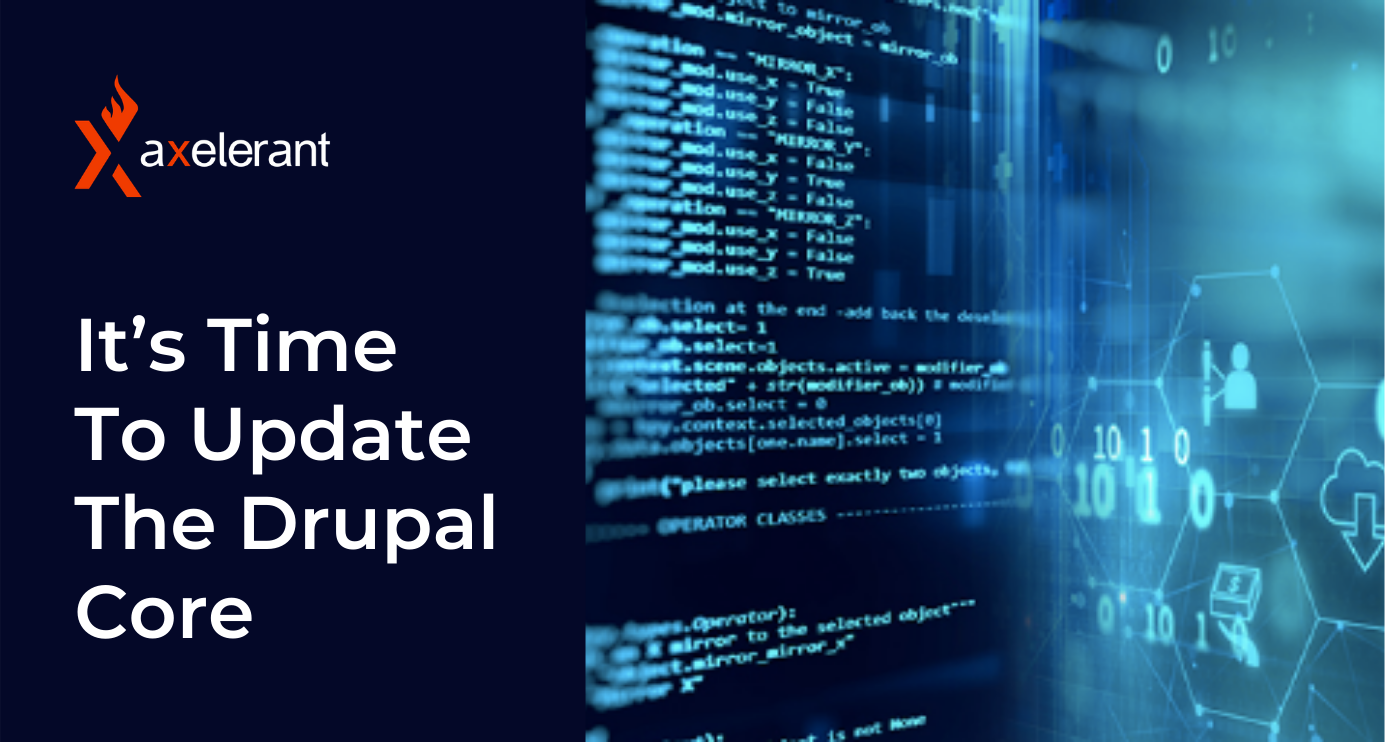Introduction
Every major release calls for updating the Drupal core.
New improvements or additions are released as patches, and website administrators are required to update the site on a regular basis. And keeping your Drupal site updated is one of the best ways of ensuring its security and stability.
Thus, it’s a good idea to update your site with the current release, i.e., Drupal 9.
Why Update Your Drupal Core?
Along with adding new features, the Drupal core release also updates the modules to make them compatible with the latest version. Therefore, updating the core becomes crucial in case you employ these modules for your website.
It is good to update your Drupal core to the latest version as and when required.
Secondly, with every release, bugs are removed from the core code of the CMS. This ensures your site’s security and uninterrupted functioning.
What Are My Options?
Now that you have decided to update your Drupal core let’s explore the options in detail.
Manually
The official Drupal site gives us a standard manual update procedure to update the core manually.
Via Drush
Drush has already removed the support for updating the Core. In Drush 9 and Drush 10 (the current version), all the up commands pm-update, pm-updatecode and pm-updatestatus are deprecated, and thus, it no longer supports updating Drupal.
Now, you need to use Composer (see below) along with Drush to update your website.
Via Composer
Composer, the dependency manager for PHP, is used for updating and installing packages (modules) in Drupal. It helps declare and manage libraries and core dependencies such as Symfony components and certain packages.
First, install Composer. Make sure all your modules are secure and supported, and compatible with the Drupal 9 version.
Challenges With Upgrading Drupal Core
Any major release will pose some challenges. Being cautious and prepared in advance can save you a lot of time and effort.
Here are a few considerations you can keep in mind during the process:
- Always look out for error messages.
- Use the file and database backups to restore your site to its previous state if needed.
- If you are not sure, you can consult one of the support options listed here.
How to begin the upgrade process?
Let’s initiate the process with some pre-requisites considered:
- Backing up all files, directories, and the database is a must before starting.
- Keep a test copy of your site before putting it on your live site.
- The release notes that come with new Drupal releases (explaining the changes made since the previous version or any special instructions) come in handy.
The standard process of updating as per Drupal’s official site is as follows:
- Take backups of all files and the database.
- Put the site in Maintenance Mode (under Configuration / Development)
- Find your webroot folder. If it is called www, rename it to www_old.
- Download the latest version of Drupal 7 core. Unzip the files and delete the site’s folder locally.
- Upload all the files to the server into a new directory www. (Make sure this www folder has the same permissions as the previous folder www_old).
- Move the site’s folder from www_old/sites to www/sites. (This assumes any contributed modules, custom themes, etc. that you use are in the site’s directory)
- If changes have been made to robots.txt or .htaccess in the new version, ensure these are incorporated into your version. The release notes should tell you whether this is required. Otherwise, copy your previous versions from www_old to www.
- Run Update.php by visiting yourdomain.com/update.php.
- While Update.php runs, if you get any errors, use the Module missing message fixer to fix these (7.5x versions only).
I hope this helps you with updating your Drupal Core. For more, get in touch with our Drupal experts!


 We respect your privacy. Your information is safe.
We respect your privacy. Your information is safe.



Leave us a comment